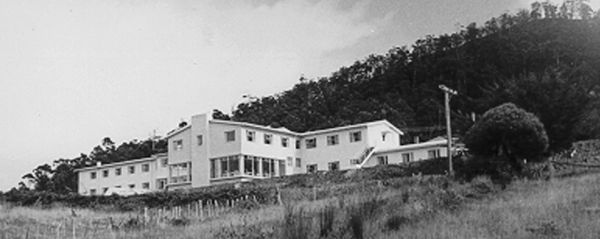 |
 |
Indian Community
Tasmania, with a large preponderance of European settlers (over 90 percent), has a smaller percentage than the Australian mainland of Asian migrants, including Indians. This is so despite a long history of Indian contacts with Tasmania, going back to the early days of the English East India Company's boats that brought Indian sailors to Australia, some of whom, like Saib (Sahib?) Sultan, Mohammad Cossom (Qasim?), Rum Conn (Khan?), John Hasan and Mohammad Abdilla (Abdullah?) made Tasmania their home. Contacts were also made by retired British hands like Captain James Fielder who set up Howrah Farm (1830s), named after an old Calcutta suburb, which grew into the suburb of Howrah; Colonel Crawford, another such retiree (1864), who entered the Tasmanian Parliament; and Edward Braddon of the British India Service who became the Premier. In 1906, Chokey Nuroo from Calcutta came rather young to Tasmania and established the popular Lufra Hotel at Eaglehawk Neck. The number of immigrants from India remained small until the middle of the twentieth century when the aftermath of the Second World War and India's independence (1947) resulted in a spate of immigration of non-ethnic India-born British and Anglo-Indians. Since 1966, the relaxation of racially based immigration policies in favour of educational and professional qualifications and the English language opened the door for many professional ethnic Indians as well as migrants of ethnic Indian background from many countries outside India, like Fiji, Singapore, Malaysia, Sri Lanka, Uganda, Kenya, Tanzania, South Africa and Britain. The total population of India-born more than doubled in Australia between 1901 and 1966, but increased almost six-fold to about 96,000 by 2001. The 2001 Census of Tasmania records 523 people as Indian by birthplace of one or both parents, and 959 as of 'Indian ancestry'. Compared to migrants from other Asian countries, the India-born have remained a distinctive group, forming the largest proportion of 'skilled migrants' rather than 'family migrants'. India takes fifteenth position among the 'Top 30 Overseas Birthplace Groups', and third among the Asians in the same group after the Philippines and Malaysia. Also, Indians have emerged as the nineteenth in 'Fastest Growing Overseas Birthplace Groups'. Unlike nineteenth-century settlers, later migrants are a highly urbanised group, occupying one of the highest levels of educational training and qualifications of any group in Australia. With 59 percent possessing educational or trade qualifications, Indian settlers held a much higher proportion than the Australian average of 39 percent. Indians everywhere bring in their inner diversities – regional, linguistic-cultural and religious. Tasmania is no exception, representing many diverse groups within its Indian community. The pattern of religious distribution varies, however, from that in India. Hindus are 83 percent in India and barely 0.1 percent in Tasmania; the corresponding figures for Christians are 2 percent and 69 percent; for Muslims 11 percent and 0.2 percent; and for Sikhs 2 percent and 0 percent. Very few Indians are found among a strong and steadily growing number of Buddhists (currently 0.4 percent). The Indian diversities in Australia are crystallised into various regional and cultural associations. Unlike in the mainland, Tasmania's small Indian population have found it neither possible nor necessary to form such associations. Indians of various religious persuasions together formed, in 1972, a non-religious association, Indian Cultural Society of Tasmania, which was structurally revamped, in 1989, by the acquisition of India House, accommodating an Indian Cultural and Community Welfare Centre. In 1973, Indian Muslims and other Muslims in Tasmania established the Tasmanian Muslim Association to meet specific Islamic religious and cultural demands for the community, especially for a mosque. Later Hindu initiatives resulted in the establishment of a centre, named Shanti Nivas (the Abode of Peace), for the pursuit of specific religious-cultural needs of the Hindus. Religious-cultural gatherings are also privately organised by individual members of the communities. Further reading: S Awasthi & A Chandra, 'Migration from India to Australia', Asian and Pacific Migration Journal, 3, 1993; S Chandrasekhar (ed), From India to Australia, La Jolla, California, 1992; Community profiles 1991 census India born, Canberra, 1995; and 1996 census, 2000; G Hugo, Atlas of the Australian people, Tasmania, 1986 census (Canberra, c1989); Department of Immigration and Multicultural Affairs, Statistics Section, Immigration: Federation to century's end, 1901–2000, Canberra, 2001; C Kondapi, Indians overseas 1838–1949, New Delhi, 1951; M de Lepervanche, Indians in a white Australia, Sydney, 1984; A Markus, Australian Race Relations, 1788–1993, St. Leonards, N.S.W, 1994; K Rivett, Australia and the non-white migrant, Carlton South, Victoria, 1975; Souvenir silver jubilee celebration (1972–1997) of Indian Cultural Society of Tasmania Inc., Hobart, 1997; The people of Tasmania. statistics from the 2001 census, Hobart, 2003; The people of Tasmania, Canberra, 2003; B York, From assimilationism to multiculturalism: Australian experience, 1945–1989, Canberra, 1996.Asim Roy |
Copyright 2006, Centre for Tasmanian Historical Studies |
